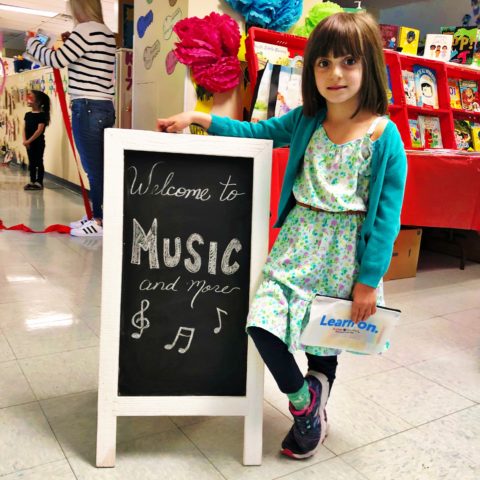
Last weekend, my sister and I took Harlow and Neve to a free music and arts event at Kiddie Academy. If you haven’t heard of it, Kiddie Academy is a nationally recognized provider of educational child care and the event was a sneak peek into their year-round Music & More curriculum.
I used to take the kids to music classes all the time when they were toddlers and it was fun to see that Harlow has still not outgrown the joy of singing along to familiar songs performed by a one-man band. I thought the kids had fun and would have left it at that, but then my sister (the school psychologist) broke down for me exactly why exposing your kids to the arts is SO important. In fact, the Music & More curriculum at Kiddie Academy was developed to improve children’s memory, cognitive development, learning skills and expressive ability. Through music and the arts, as well as a variety of other avenues, Kiddie Academy treats every experience as an opportunity for a child to learn. And here I was thinking the event was just about watching your kid dance around to Old MacDonald!
I asked my sister to explain all the underlying benefits that music has on the developing brain. Not everyone knows there is actual science behind most children’s songs! Here’s what she had to say:
———————–
When a parent exposes their child to music at a young age, they are probably thinking that they are helping their child develop an appreciation for music, which will hopefully inspire them to play an instrument later on. As a mom of two young children, I think this is a great reason, but since I am also a school psychologist, I know that the benefits of music far exceed what many parents think. Participating in arts and incorporating music into your daily routine at home has the potential to positively impact nearly every domain of your child’s development. Below are a few examples of the benefits of music that you might not have considered:
Cognitive Development: Songs have a way of becoming ingrained in our memory. This is why our Music & More musician felt the need to apologize before he sang the overplayed “Baby Shark” song because he knew this song would inevitably get stuck in our heads for the rest of the day – and he was right! For children, the repetition, patterns, and rhythm of these seemingly simple songs enables them to remember larger chunks of information than they would otherwise be able to recall without the melody. To further demonstrate this point, think about trying to teach a 2-year-old the letters of the alphabet without using the ABC song. Similarly, exposure to the language patterns and rhythms in songs improves early literacy skills such as phonological processing, which is the ability to break a word apart into its discrete sounds, and pattern recognition which is needed for identifying the predictable relationships between numbers that are needed to learn math. For these reasons, many studies have shown that a curriculum that involves music is associated with higher scores on IQ tests and measures of academic achievement.
Language Development: Before you opt for the more modern music classes or CDs so you don’t have to listen to your child sing traditional songs like Old McDonald a hundred times in the car on the way to Grammy’s house, you might want to consider the benefits of many of these classic songs on language development. When toddlers are first learning words, the easiest sounds to imitate are animal sounds (e.g., moo, baa, and neigh). Learning animal sounds and vowel sounds (like E-I-E-I-O) help children develop important speech sounds that lead to improved articulation. Music also builds children’s vocabulary and improves their listening comprehension and communication skills. When my son Jack started music classes as an infant, we played the CD from his class as a part of his daily routine. The repetition helped him develop strong language skills from an early age as well as knowledge of animal names, animal sounds, colors, feelings, body parts, letters, and numbers— which are all essential skills for school readiness. Now that Jack is in kindergarten, he is learning to read the lyrics from these same familiar songs in school. The teacher adds new lyrics to his shared reading notebook each week, which contain new sight words that are repeated throughout the song to build his literacy skills. It is fascinating to think that the same songs he learned as a baby, which taught him to speak, are now teaching him to read.
Motor Development: When you first introduce songs like “Open, Shut Them” to your baby, you are probably working on getting them to smile and engage with you, but these types of fingerplays have several other advantages for helping your child to achieve fine and gross motor milestones. The use of fingerplays in songs like the “Itsy Bitsy Spider” and “Where is Thumpkin” help children develop the finger strength and coordination needed later for holding a pencil when drawing, writing or playing the guitar. Other movement songs help children develop gross motor skills, coordination, and motor planning. When “Head Shoulders, Knees, and Toes” was played at the Music & More event, the musician varied the tempo. Most parents were just delighted to see their kids laughing; what they probably didn’t realize is how great these activities are for motor coordination, self-control, and body awareness. When children practice these skills regularly, they are better able to learn to ride a bike, play sports, and perform tasks requiring attention, focus and impulse control.
Social-emotional Development: We often use familiar lullabies to soothe a crying baby and, in fact, studies have confirmed that this practice is based in science. Songs activate the brain’s limbic system, which is responsible for processing emotions. Singing to infants has been found to reduce heart rate, improve oxygen levels in preemies, and reduce stress and pain levels. When parents sing to their children, it can also improve the attachment that an infant has to a caregiver. In addition, music can also be used to teach children the vocabulary around basic feelings and coping skills (e.g., If You’re Mad and You Know It, Stomp Your Feet), so that they are better able to identify and express their feelings appropriately. Learning new songs or how to play an instrument requires delayed gratification and persistence, which are skills that are highly predictive of future success in school. In addition, music provides opportunities for children to learn social skills such as taking turns and sharing materials. During the event this weekend, my daughter Neve became upset when the instructor took out a unicorn puppet and didn’t select her to hold it as the “special helper” for the song. As a mom, it was hard for me to see her getting upset, but as a psychologist, I recommend embracing these opportunities as teachable moments because coping with disappointment and strong feelings is a part of growing up. Kids need lots of practice coping with minor setbacks to build the skills needed to improve their resiliency later in life.
For all of the above reasons, the Music & More event was a great learning activity for our family, but more importantly, it was a lot of fun! It also reminded me how much I miss the opportunity to try new things with Mazzy and Harlow now that they are in school. The event was just a snapshot into the incredible Music & More curriculum that’s available all year long at Kiddie Academies across the nation. The art-focused programs provide a fun, active and engaging multi-sensory workout for your child with age-appropriate dance, art and music activities that build on the young child’s natural love of music, stories, movement and pretend play.
Since its inception, Kiddie Academy has been a leader in educational child care, serving families and their children ages 6 weeks to 12 years old with full-time care, before-and after-school care and summer camp programs. For more information, visit kiddieacademy.com or find Kiddie Academy on Facebook.






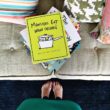

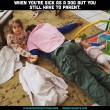




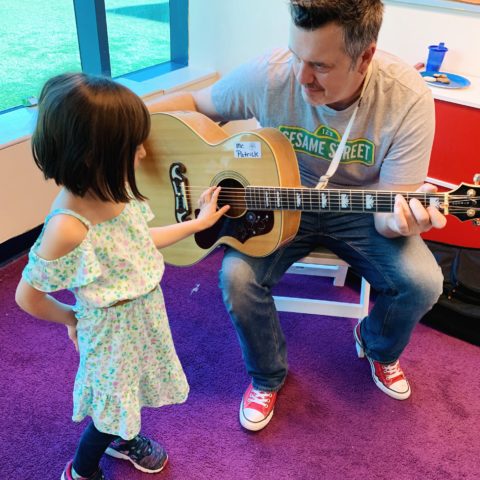
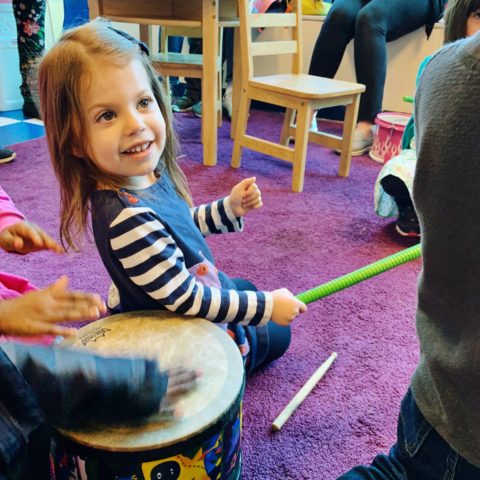
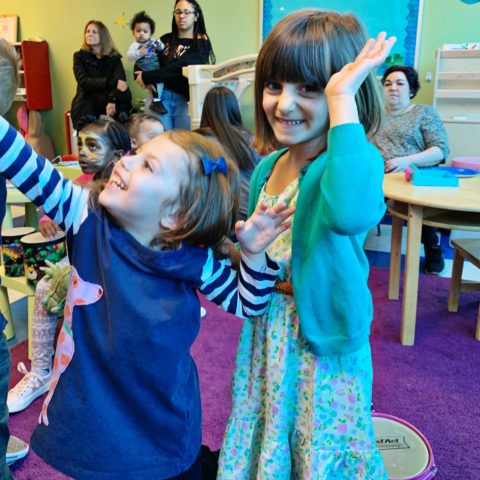
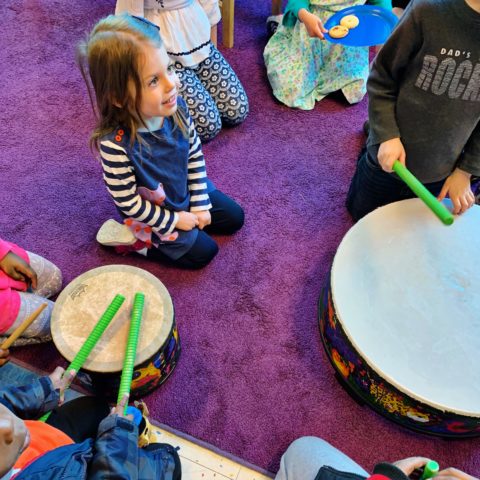
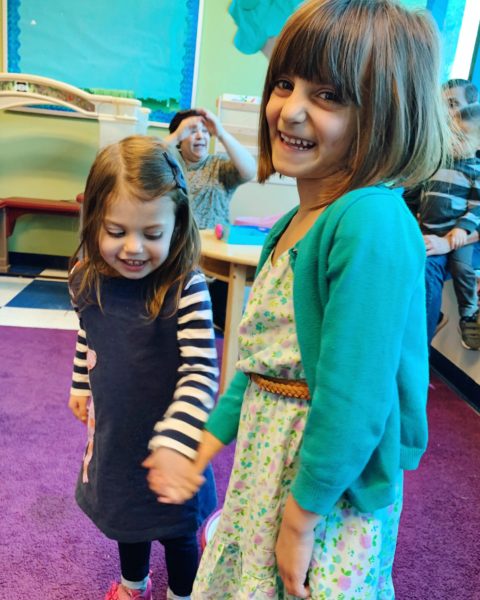
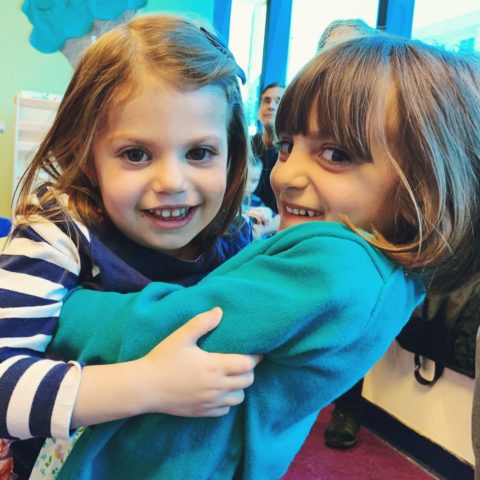
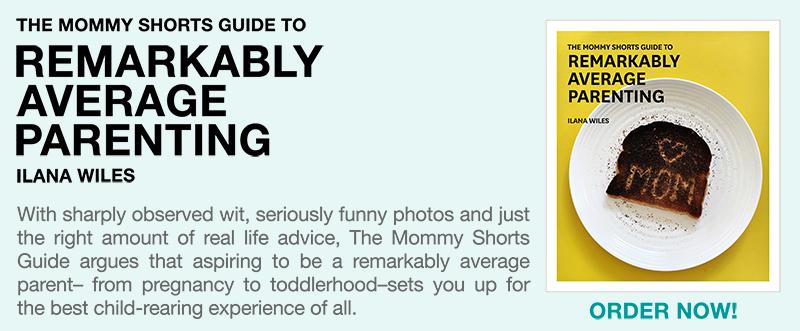
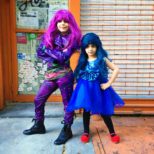



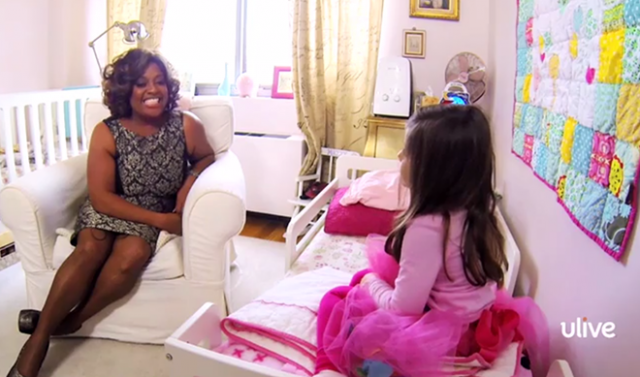






Apparently Mother Goose was ahead of her time. Another accolade for females! Thank you for this informative article.
this weekend i found that my best friend’s 5 month old baby responds really well to K7’s “Come Baby Come”. That helps the development too, right?!
wow thanks for the article check my site Amazing good morning images
Apparently Mother Goose was ahead of her time
very nice
Apparently Mother Goose was ahead of her time. Girl Power!